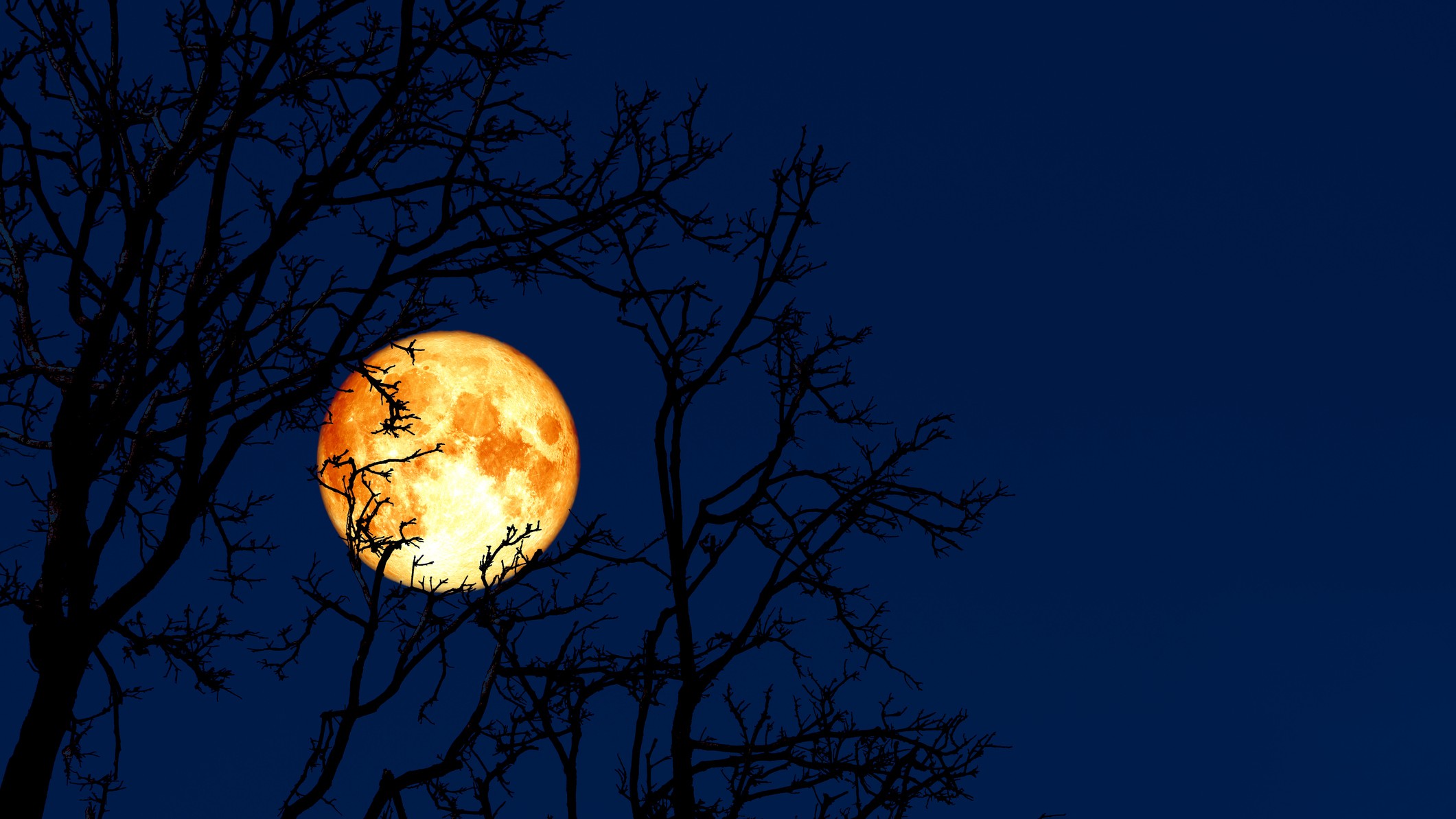Watch the full 'Worm Moon' wriggle into the sky on March 7
The March full moon is known as the Worm Moon. It will be at its fullest at 7:40 a.m. EST on March 7, 2023.

March's full moon will rise on March 7, coinciding with several holidays and festivals around the world.
The Farmer's Almanac calls March's full moon the Worm Moon, after the worms that start to come to the surface after the ground begins to thaw in the Northern hemisphere. Many Anishinaabeg, or Ojibwe, Indigenous people of the Great Lakes region knew it as Onaabidin Giizis, or the Snow-Crust Moon, according to the Center for Native American Studies.
But Europeans may know March's full moon as the Lenten Moon, according to NASA, after the Christian period of fasting before Easter, which coincides with this period in the lunar cycle. The full moon also coincides with Purim, the Jewish holiday that celebrates the salvation of the Jewish people from a plot to kill all the Jewish citizens of ancient Persia. Purim 2023 will begin the evening of March 6 and continue through the evening of March 7.
For Hindus, this March's full moon marks the festival of Holi, a celebration of the love of the god Radha Krishna and the triumph of good over evil. During Holi, revelers light bonfires and douse each other with colorful powders or dyed water.
For many Buddhists, March's full moon is the full moon of the third lunar month, the time of the festival Māgha Pūjā in Cambodia, Laos, Thailand and Sri Lanka. This festival celebrates an ancient gathering of disciples with Buddha.
The moon will be at its fullest at 7:40 a.m. EST (1240 GMT) on March 7, but it will look full for the days before and after the official full moon, according to EarthSky. Full moons always happen when the moon and the sun are on opposite sides of Earth. With the moon's dayside fully facing Earth, the entire disk of the moon appears bright and round. According to The Sky Live, the moon is currently 251,072 miles (404,062 kilometers) from Earth, at neither its farthest nor closest point (known as apogee and perigee, respectively).
After the Worm Moon, the next full moon will occur on April 5. It is sometimes called the Pink Moon, after the pink wildflowers that begin to bloom at this time of year in parts of North America.
Get the world’s most fascinating discoveries delivered straight to your inbox.

Stephanie Pappas is a contributing writer for Live Science, covering topics ranging from geoscience to archaeology to the human brain and behavior. She was previously a senior writer for Live Science but is now a freelancer based in Denver, Colorado, and regularly contributes to Scientific American and The Monitor, the monthly magazine of the American Psychological Association. Stephanie received a bachelor's degree in psychology from the University of South Carolina and a graduate certificate in science communication from the University of California, Santa Cruz.


